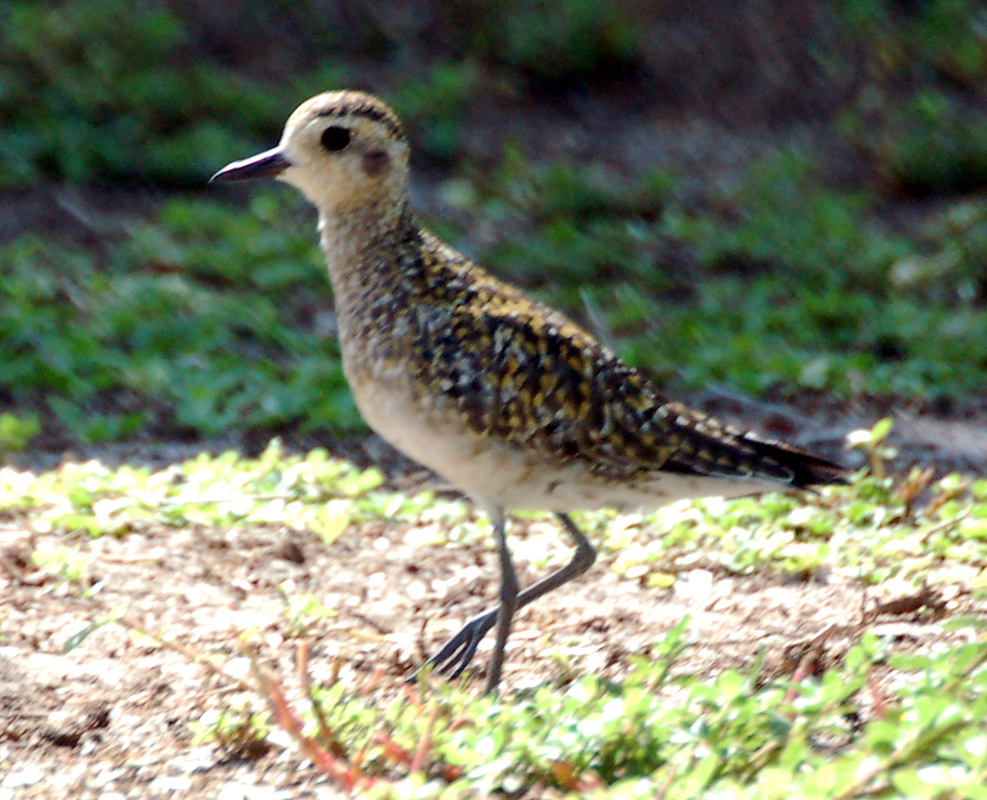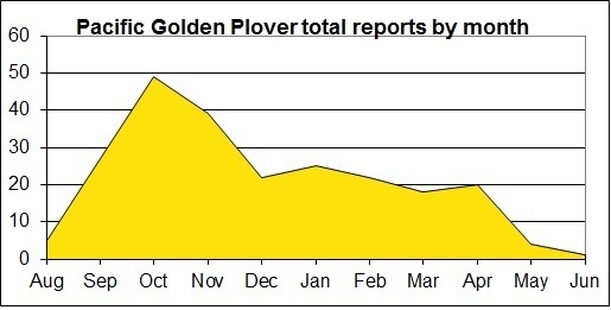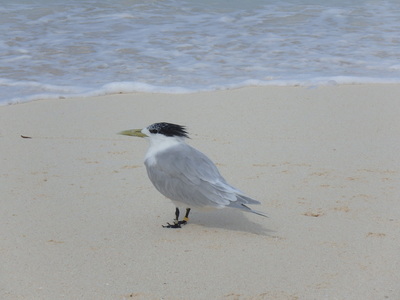|
|
Joe Bluemel and Pete Holden of Island Conservation Society have reported that the Tropical Shearwater pair at Desroches is back at the same burrow where they were found in October 2015 and May 2016. The burrow has been dug back further from the damaged part and is very inconspicuous. On the 27th July the burrow contained a chick. Weekly monitoring is on-going. Also, Tropical Shearwater calls have been heard around the Wedge-tailed Shearwater colony. Further playback will be used in August to try to identify any additional nests.
0 Comments
Clare Keating Daly of Save Our Seas Foundation has reported a Pacific Golden Plover Pluvialis fulva at St Joseph Island, St Joseph Atoll, present on 14 April 2016. The bird was also observed by Ryan Daly and Kerryn Bullock.
Pacific Golden Plover is an annual visitor to the inner islands but east of Mahe it is known only from 10 records from Alphonse and 5 from Aldabra. St Joseph is now the third outer island where it has been recorded. The record comes later in the season than any other previous outer island record though in the inner islands there have been a few records as late as May. Sightings for Seychelles as a whole peak in October, declining thereafter with no evidence of any northbound movement through Seychelles. On 12 May 2016, Janske van de Crommenacker photographed a Greater Crested Tern at Denis Island, bearing a metal ring and yellow colour ring. There is no ringing programme for this species in Seychelles, suggesting that this bird must have come from elsewhere. After making enquiries, it appears that almost certainly the bird originated from South Africa.
Nola Parsons from SANCCOB, a seabird rescue centre based at Cape Town responded on 22 July to say "I think it is very possible that we rung the bird at SANCCOB! Although we normally place the metal ring on the right leg, but it could have been placed on the left leg by mistake, and we did use yellow bands that looked very similar to those in the photo. Without knowing the number, we can’t say for sure but the yellow bands were put on chicks that were hand-reared (mostly collected from the Cape Town waterfront area) and released, either on Robben Island or back at the waterfront. So it is really nice for us to know, or at least hope, that our chicks are making it to adulthood although I am not sure that they are meant to travel all the way to the Seychelles!" It is known that Greater Crested Terns from outside the Malagasy region visit Seychelles. SBRC has recorded three records of the dark-backed race velox, which breeds from the Red Sea to Persian Gulf and Bay of Bengal. It has also been noted that the species is a fairly common non-breeding visitor to almost all Seychelles coasts yet the total national breeding population is only a few hundred pairs. Perhaps numbers are augmented by non-breeding visitors from both the north and the south? Aurelie Duhec has reported a Eurasian Curlew at Bird Island on 3 July. This species is an annual visitor to Seychelles in very small numbers. SBRC keeps track of all sightings from reliable observers, but does not request a record form. The underwing of race orientalis, the race occurring in Seychelles, is white as in the photo whereas the nominate race has an underwing speckled black. It has been recorded in all months of the year but sightings are much less frequent between June and September.
|
AuthorAdrian Skerrett Categories |








 RSS Feed
RSS Feed
